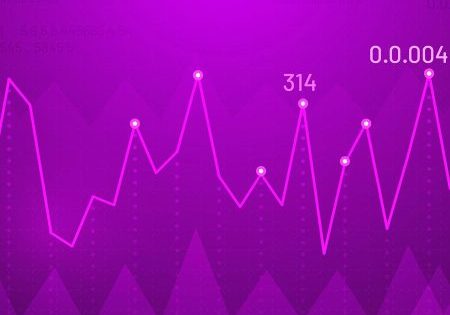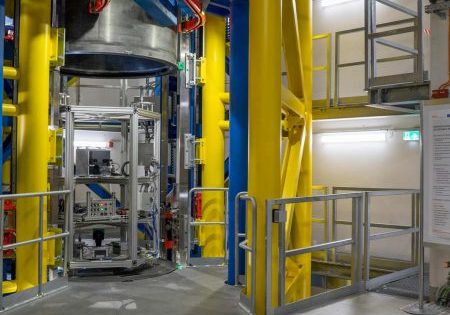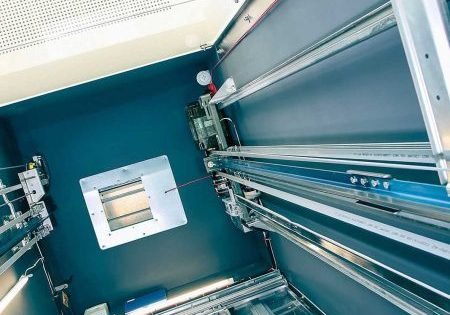In the Thick of the Digital Revolution
Dec 5, 2020
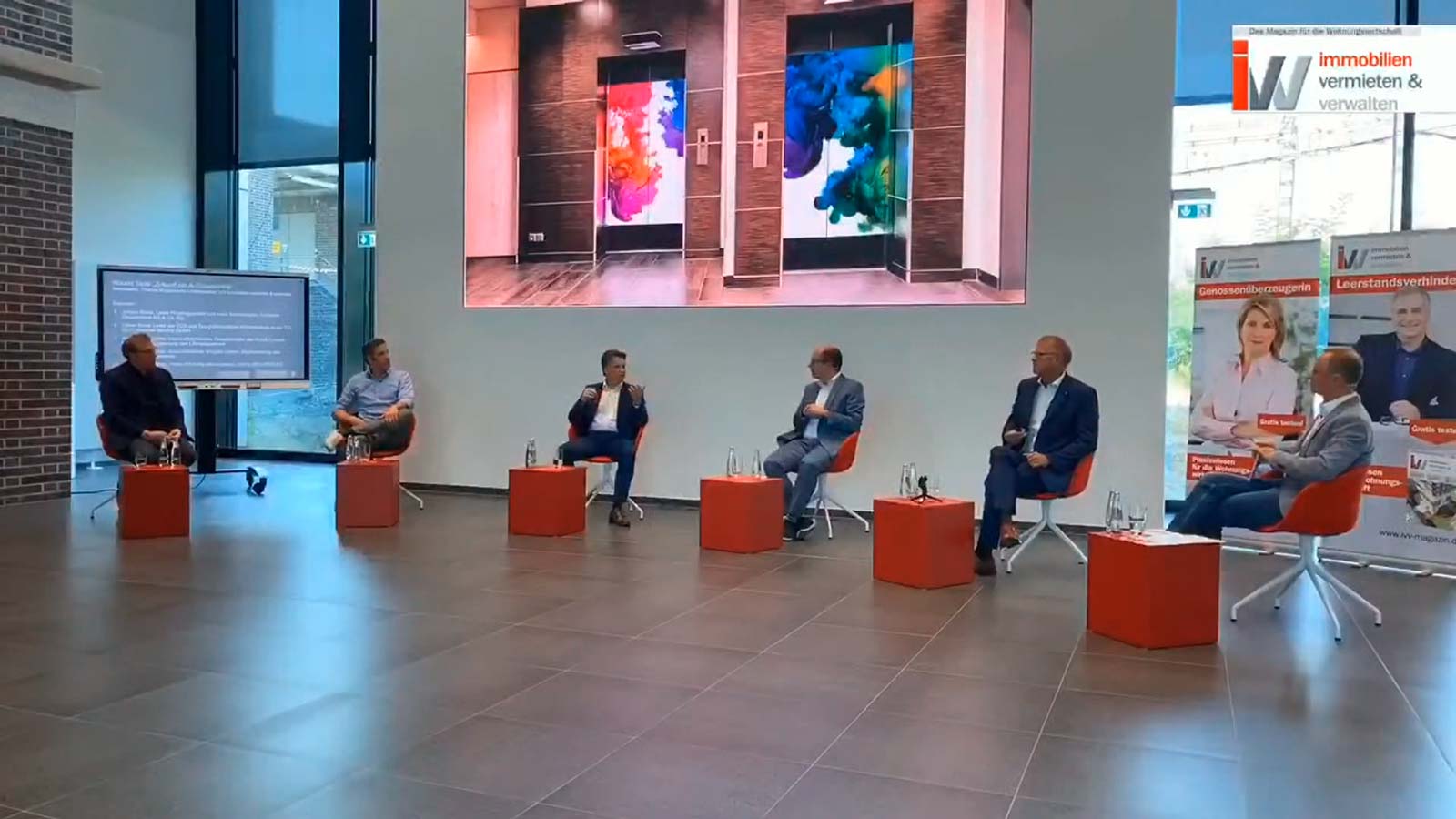
First in the IVV Round Table series focuses on digitization as part of “The Future of Elevator Technology.”
In September, the new IVV Round Table series of events started with a 1.5-hr livestream from the headquarters of Schindler Germany on the subject of “The Future of Elevator Technology.” More than 100 guests participated live in the German talk. A recording of it can be viewed at bit.ly/3eGYU8l.
- Thomas Engelbrecht, editor-in-chief for trade magazine IVV (renting and managing real estate), based in Berlin, spoke with the following experts:
- Jürgen Blank, head of project business and new technologies at Schindler Germany
- Ludwig von Busse, founder and CEO of Simplifa, digitization of elevator management
- Günter Lammering, head of facility management, alstria office Reit
- Dieter Roas, head of ZÜS (authorized inspection body) and head of the conveyor technology business unit at TÜV SÜD Industry Service.
- Alexander Wüllner, managing partner of Hundt Consult, elevator planning and management
As elevators are complex and relatively expensive parts of buildings, a higher level of professionalism in management offers a correspondingly high potential for cost reduction. Digitization of elevator operation is a suitable measure for this purpose for all parties involved. For it, various questions must be clarified. They include:
- What experience has been gained with the digital monitoring of elevators?
- What market significance has digital elevator management achieved? Does it lead to cost savings for operators or additional costs for additional services?
- Will digitization make elevators safer and more economical?
- How safely are elevators operated in Germany?
People are the focus of the solutions.
— Jürgen Blank
Blank presented the Future Living Schindler project in Berlin, in which a transit management solution monitors more than just the elevators. For example, it provides access to the underground parking lot and the building, fetches the elevator, opens the elevator door and pilots authorized floors, all of which can be seen on a smartphone app. The application enables not only advertising within and outside of the elevator, but also digital service management. It can solve customers’ problems along the entire value chain without compromising the safety of the elevator. This is where the creativity of the real estate owner is required. Implementation is then uncharted territory for all of those involved.
Regarding predictive maintenance, Blank noted that only about 20% of elevators in Germany are monitored. As half of all elevators are more than 20 years old, there is a great need for investment here. Bidirectional communication with the system’s controls enables faults to be detected. Approximately 15% of these may be repaired remotely. Even for those that cannot, the arrival time of a service technician is significantly faster with remote monitoring.
For Wüllner, digitization creates freedom for other tasks, such as faster spare parts procurement. Such benefits need to be communicated to property owners and operators to help them understand why they have to pay more when there is less service. The elevator industry believes in added value and, thus, increasing prices, instead of reducing costs, by increasing efficiency.
No matter how digital we make it, it will remain a people business.
— Alexander Wüllner
Von Busse emphasized that the major challenge is to digitize older technology. Different parties dealing with the elevator need different data. As a service provider, von Busse offers to collect data from all manufacturers, edit them (currently still partly done manually from contracts or invoices), then meaningfully evaluate the data or make them available as raw data to the service company or elevator manufacturer. This is the first step toward predictive maintenance and creates transparency. It is important to the owner of the data and what happens to them in such cases as a parting of company. Von Busse’s goal is to achieve zero defects during an elevator inspection by his monitoring.
Blank added that Schindler receives data, which are evaluated by Big Data analyses, from all over the world from identical elevators. Schindler Ahead currently has around 1,000 customers online with whom Blank wants to work to increase the availability of the systems via predictive maintenance. He described the procedure step by step:
- Problems identified from the data can be broken down into categories for which a probable solution can be found.
- These suggestions are sent to the service technician’s app.
- The service technician continues to make decisions onsite, such as about replacing a component.
- The technician gives feedback on what the problem really was onsite, resulting in better suggestions.
What is the worth of a fault that does not occur?
— Thomas Engelbrecht
This is how digitization increases quality. A technician only visits the site if the problem cannot be solved remotely.
From the user’s point of view, Lammering gave insights based on his approximately 500 elevators in existing buildings. The safeguarding of operator responsibilities, such as elevator safety, is the focus of his work. He delegates these tasks to third parties. Third parties also perform the necessary inspections. Independent inspection by TÜVs is important for him. There are a lot of data, but it is unclear which are really needed. His statistics show about 700 incidents per year, but there are complications, such as the data not being maintained.
Roas thinks everyone has the same expectations of the elevator: It should be safe, user-friendly and economical. According to TÜV SÜD, approximately 3,100 elevators were shut down because of dangerous defects. Around half of all elevators in Germany show a defect. In other countries, the figure is 12 times higher. He credited the difference to independent inspection once a year in Germany. Digitization also contributes to this via remote monitoring and predictive maintenance.
Predictive maintenance is what we all want, but it will still take a while.
— Ludwig von Busse
TÜV SÜD has equipped its own facilities with its own sensors to learn from the monitoring what happens when mechanical components are replaced by digital solutions. “Together, we are all still in our infancy,” said Roas, “which leads to new risks.” The pressure for digitization is coming from China. There, 700,000 new elevators that will need to be serviced are installed each year. Such growth is not possible without digitization. Roas also expects greater growth in Germany in the next five years.
Wüllner challenged each company to make interfaces that are standardized, open and freely accessible. Programmable logic controllers must be opened for the inspectors to avert dangers with functional safety. There are already ongoing initiatives in this area.
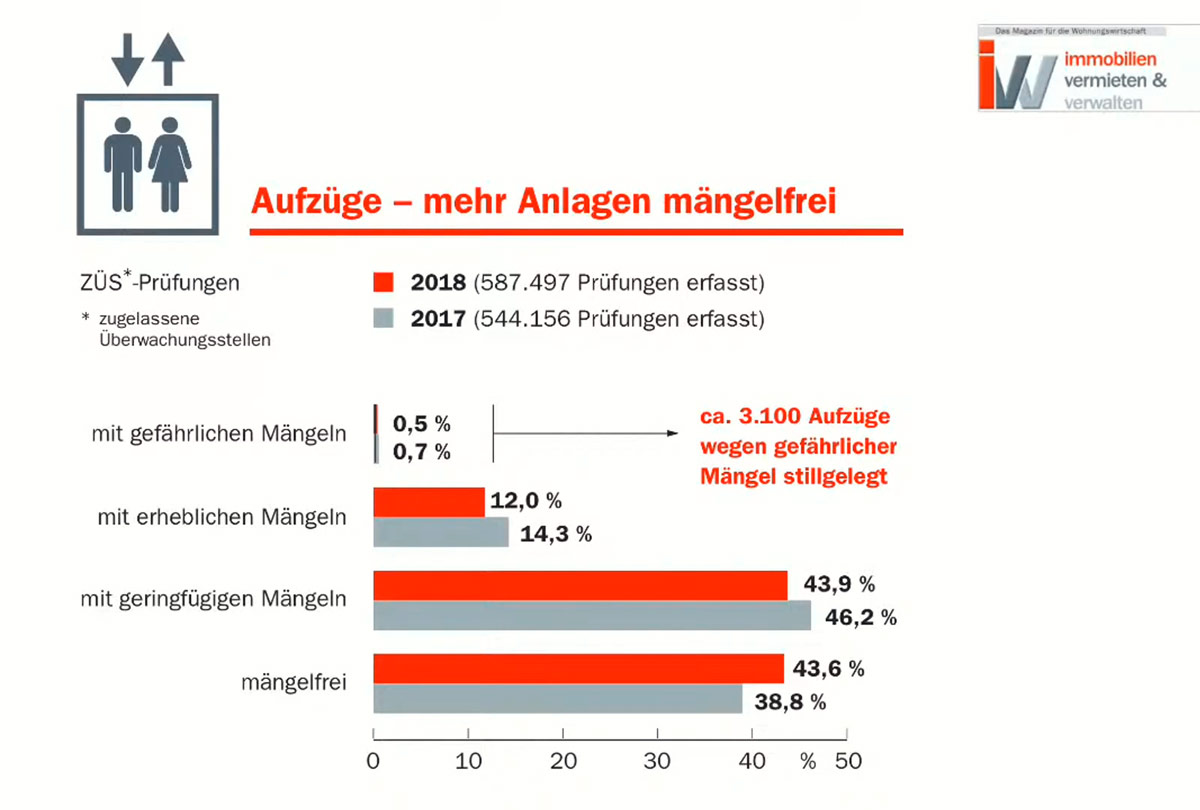
Roas pointed out that the smartphone must not allow relatively easy access to such components as frequency converters to change the travel speed, which would be an attack on the safety of the elevator. Cybersecurity is of the highest priority for Blank. Schindler has its own worldwide operating department for this purpose. On the other hand, however, Blank wants to keep the effort involved within reasonable bounds, because elevators are “probably not the first target of hackers.” Roas said he is not yet aware of attacks on building services systems.
Lammering was concerned with how investment costs will develop as digitization becomes universal. Electronics that must be replaced every 15 years might not compare favorably with the mechanical elevator, which used to have to be replaced only every 100 years. Wüllner mentioned elevator-as-a-service as one possible solution.
I would be happy if there were a facility register according to DIN 276.
— Günter Lammering
The last topic addressed was whether there is a risk of favoritism in the case of large volumes of inspections. All participants in the discussion agree that the “triumvirate” (operator, service company and independent inspection body) should be kept. They also said it should be supplemented by the partner in charge of elevator management.
Engelbrecht summed up the discussion by describing digitization as a “mammoth task for generations of programmers” and stated, “The time is due. . . . We are in the thick of the digital revolution”.
Get more of Elevator World. Sign up for our free e-newsletter.

